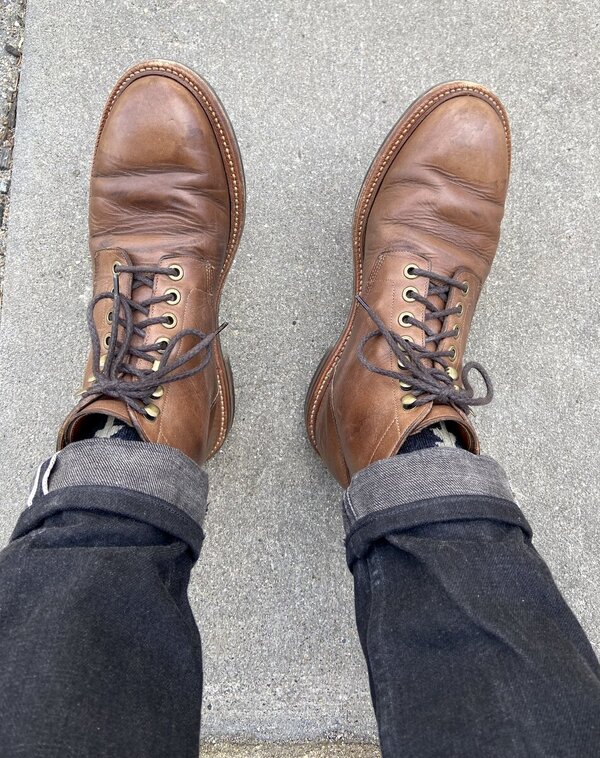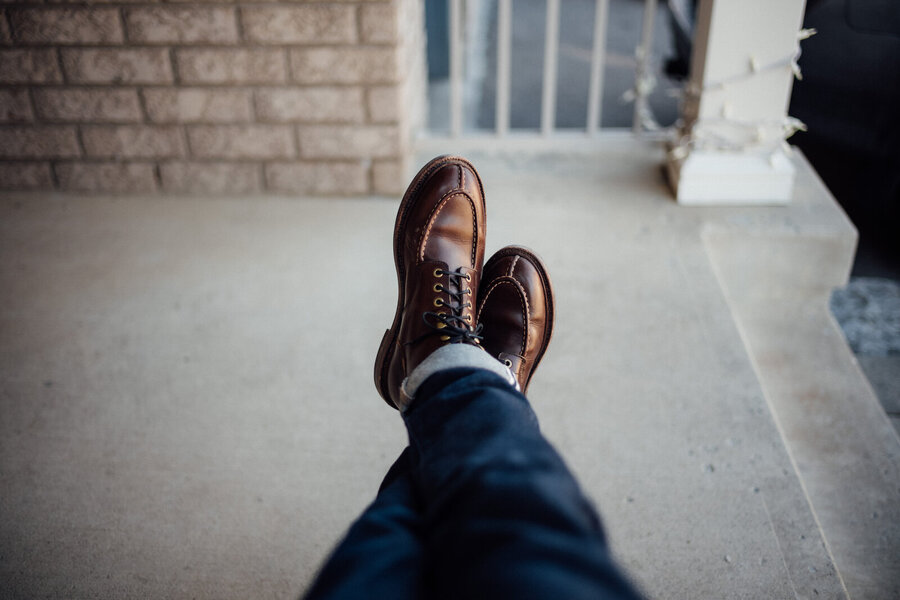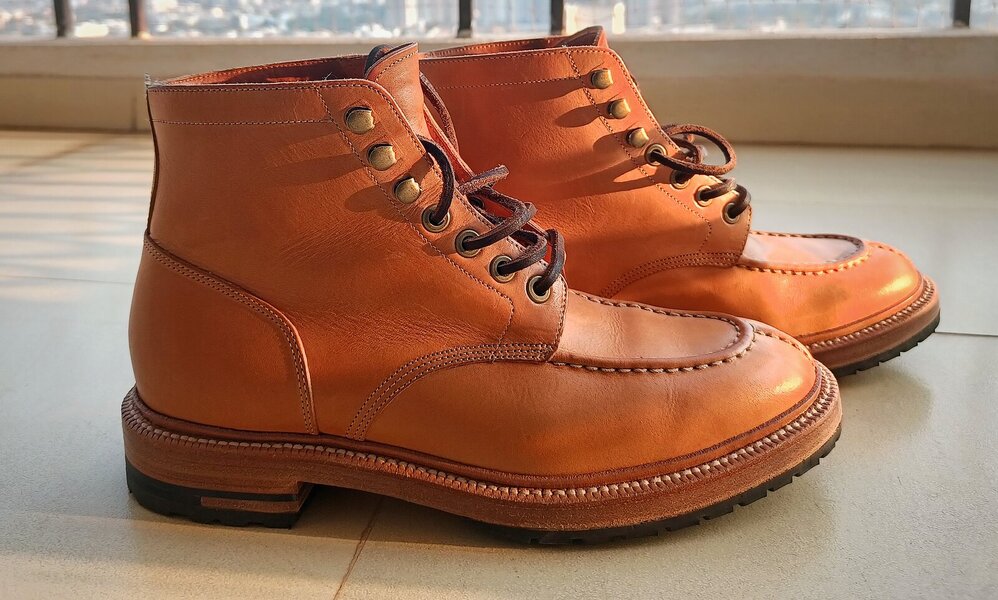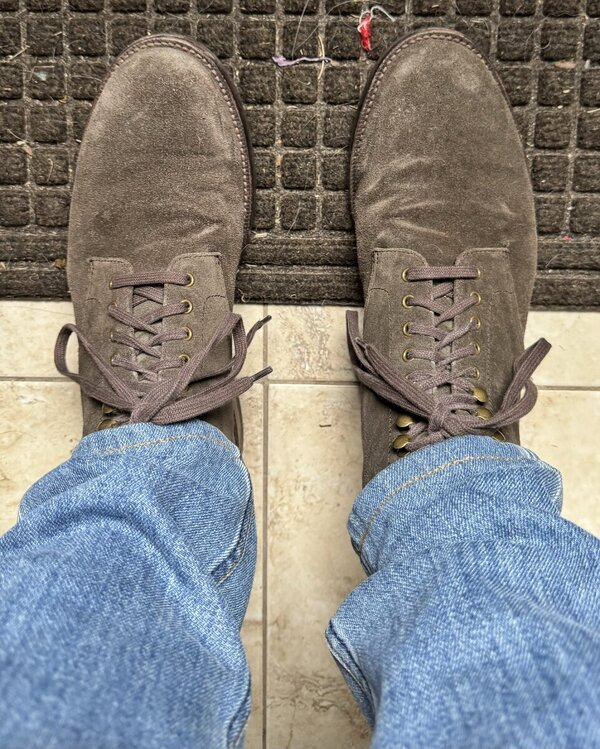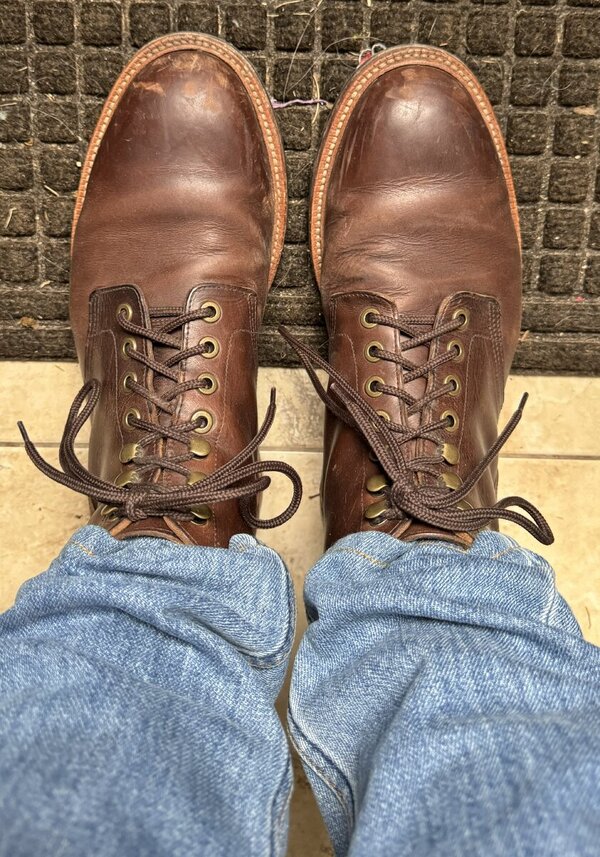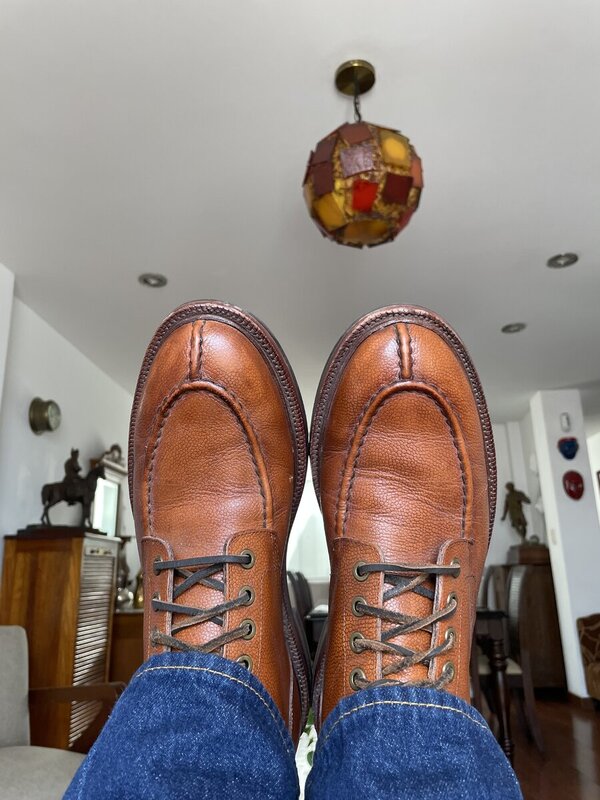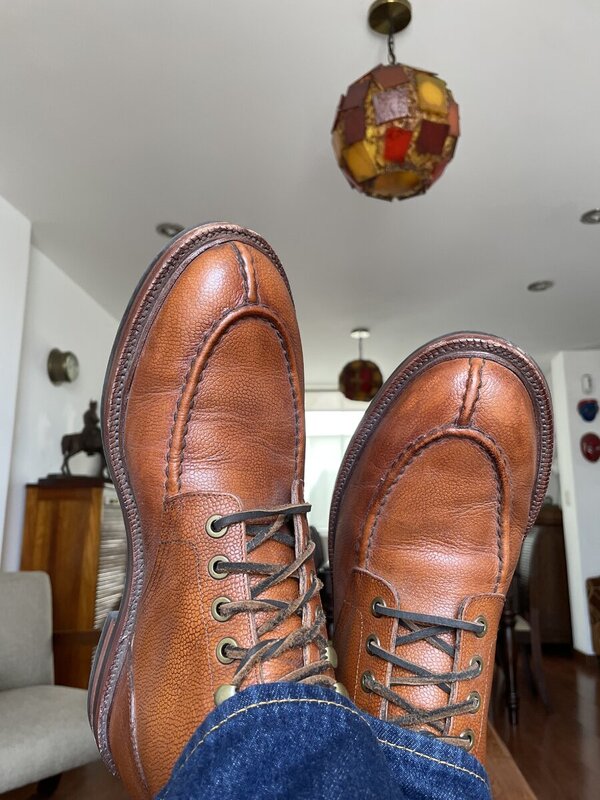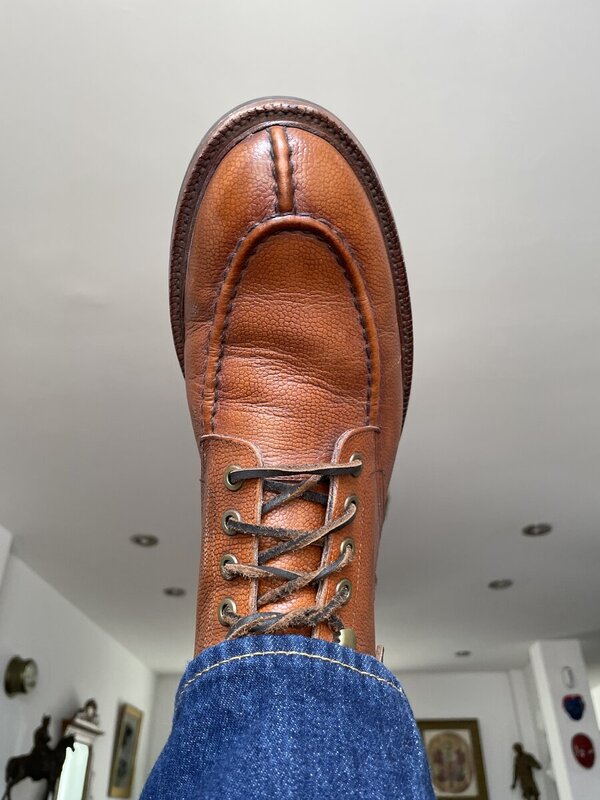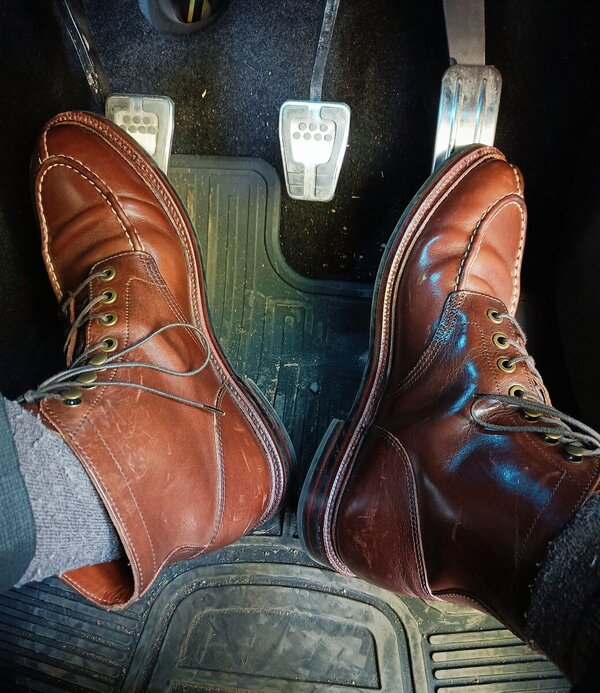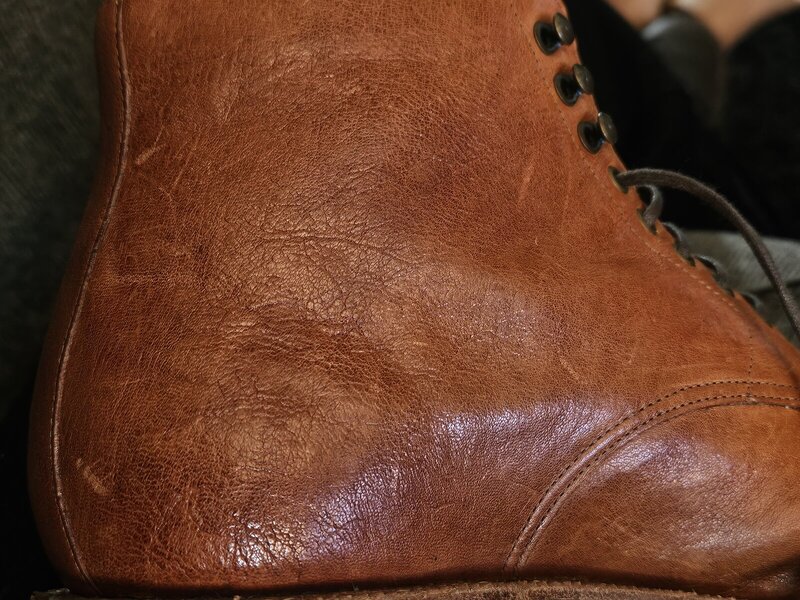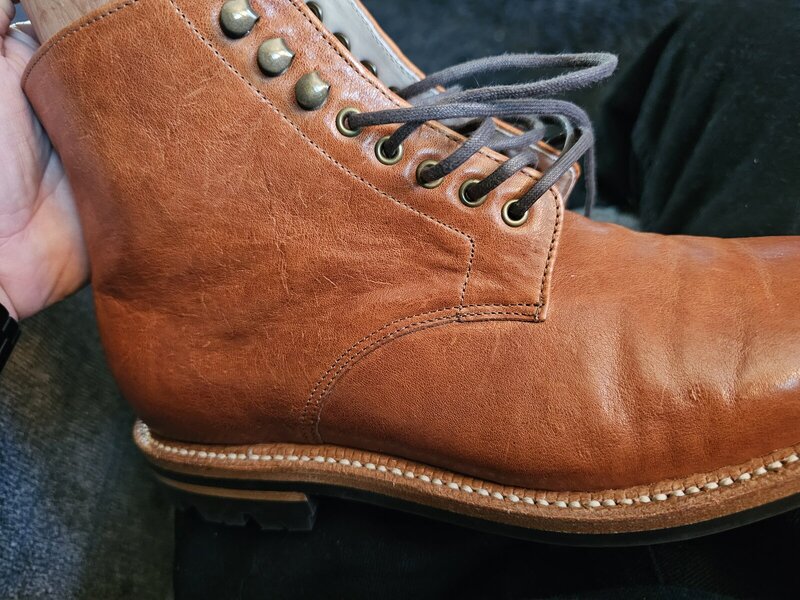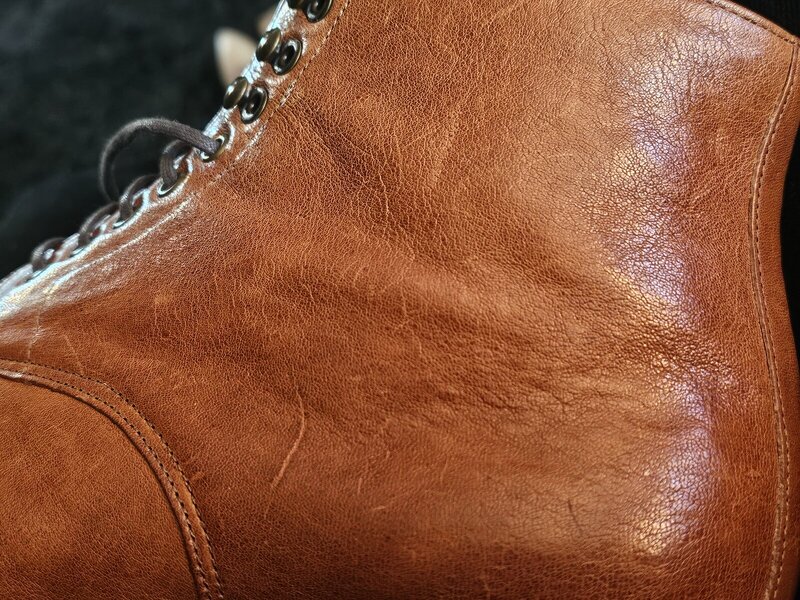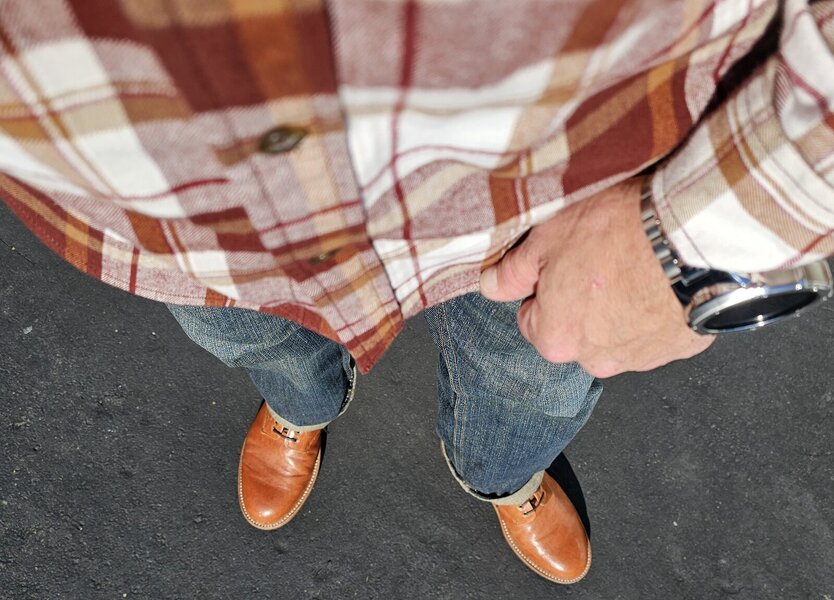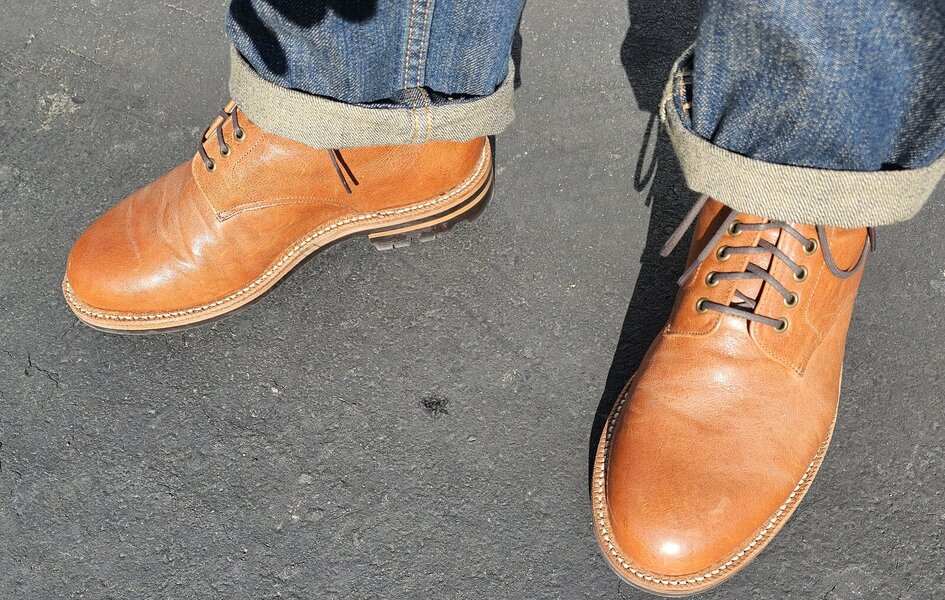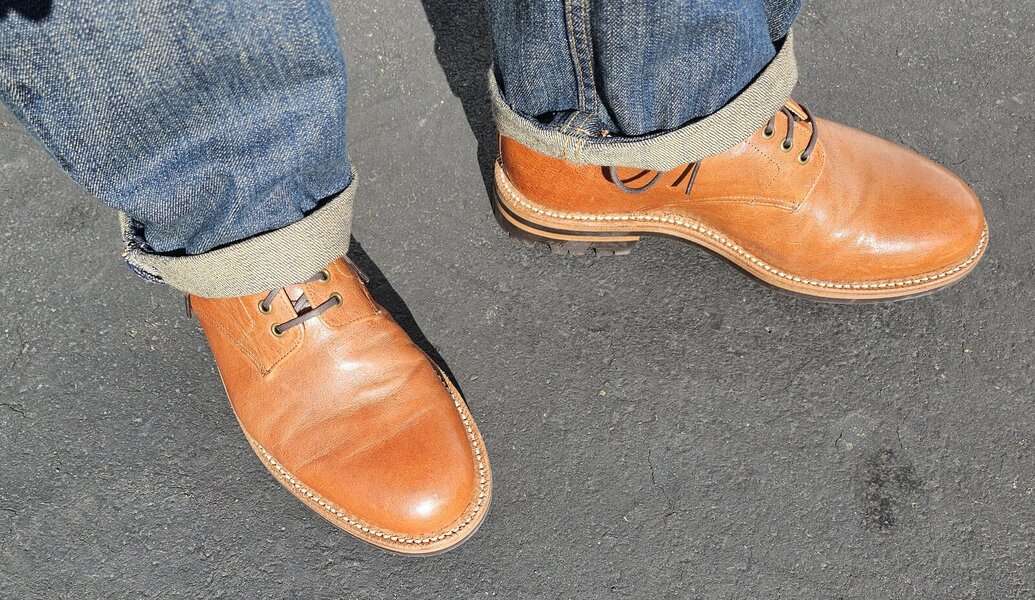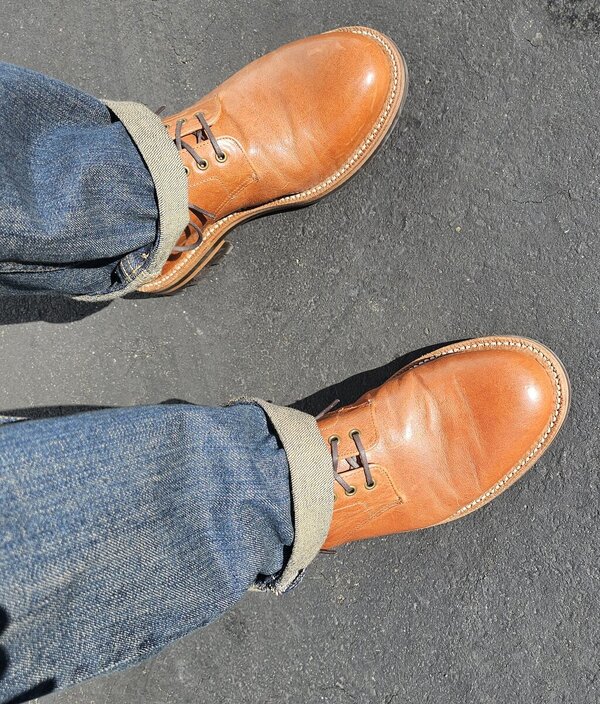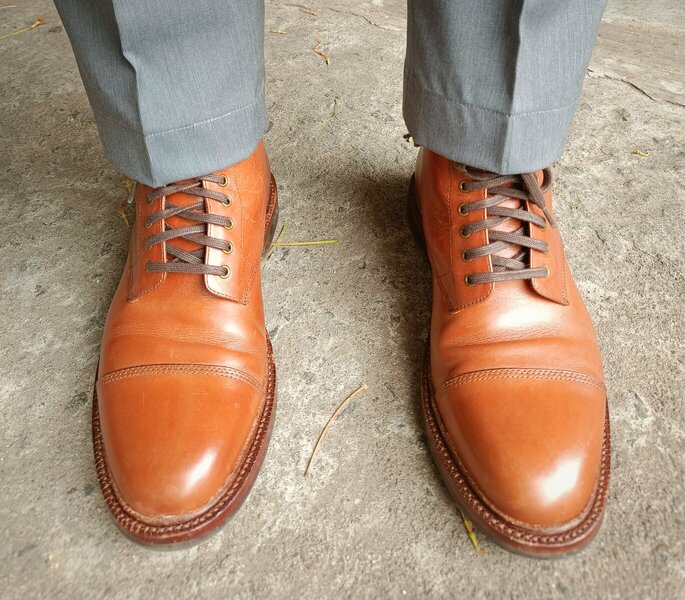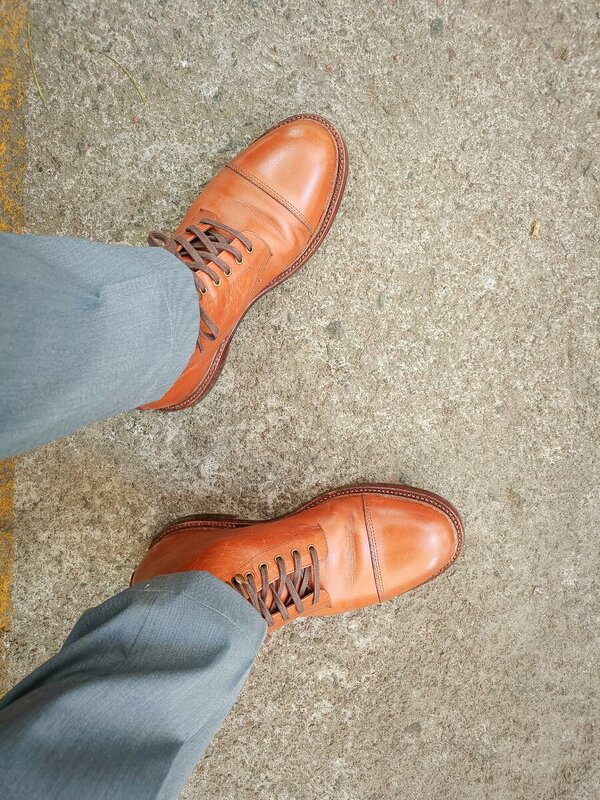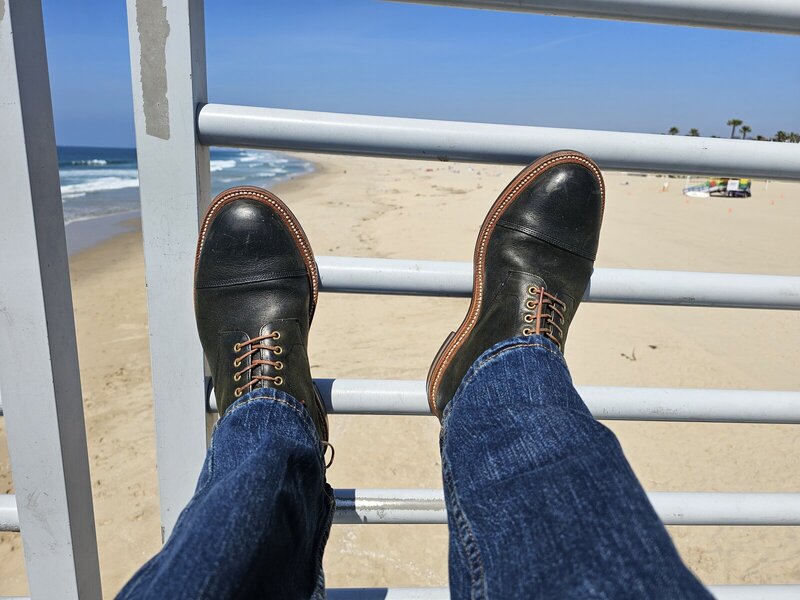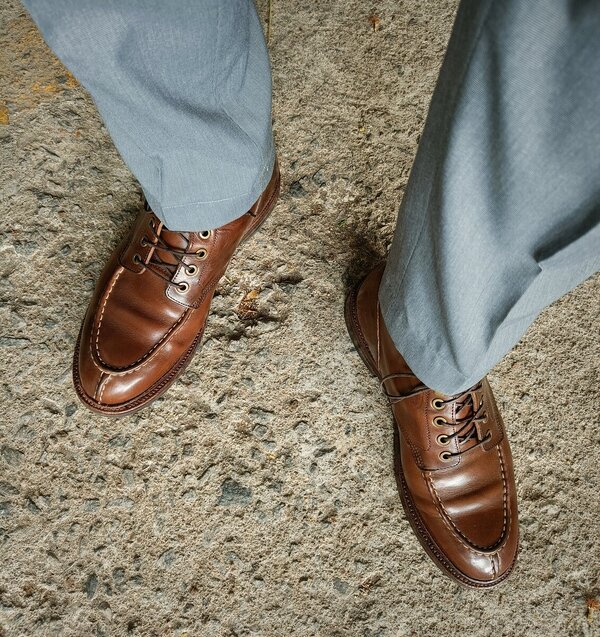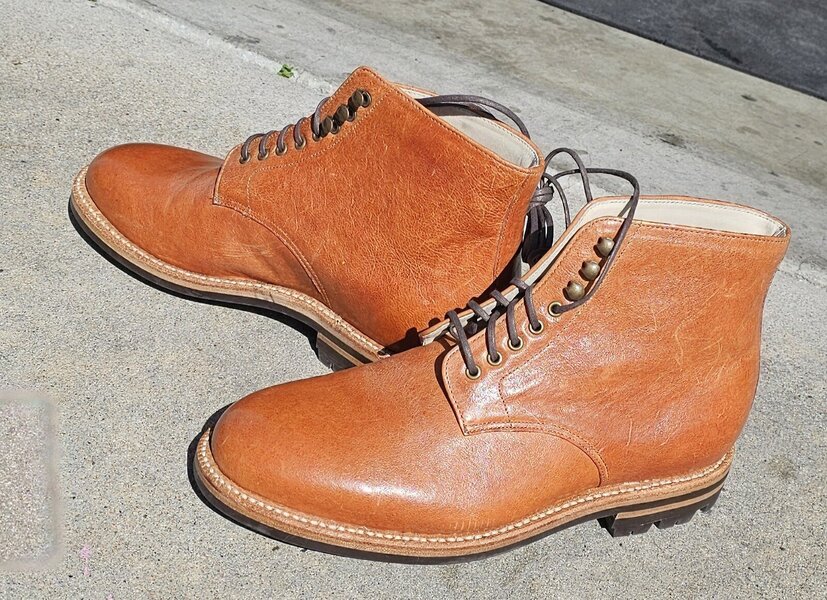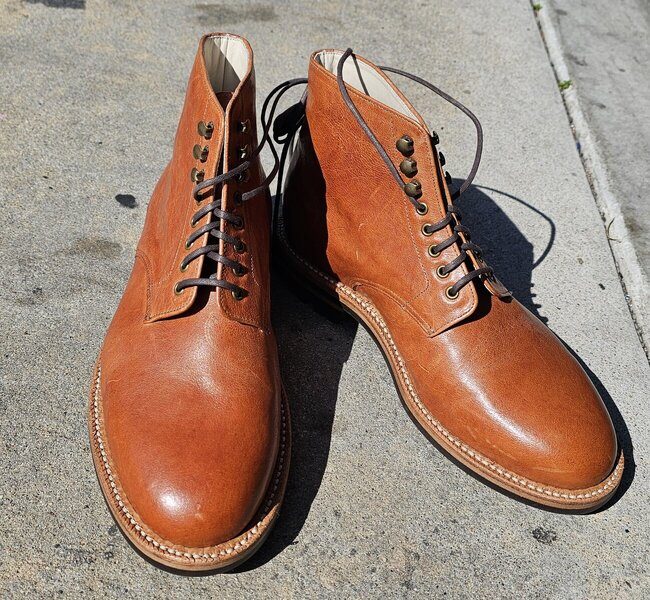Support the forum
Navigation
-
- Men's Style
- Classic Menswear
- Streetwear and Denim
- Preorders, Group Made-to-order, trunk shows, and o
- Menswear Advice
- Former Affiliate Vendor Threads; a Locked Forum.
- Career and job listings in fashion, mens clothing,
-
- American Trench
- AMIDÉ HADELIN
- Archibald London
- The Armoury
- Arterton
- Besnard
- Canoe Club
- Capra Leather
- Carmina
- Cavour
- Crush Store
- De Bonne Facture
- Drinkwater's Cambridge
- Drop93
- eHABERDASHER
- Enzo Custom
- Epaulet
- Exquisite Trimmings
- Fils Unique
- Gentlemen's Footwear
- Giin
- Grant Stone
- House of Huntington
- IsuiT
- John Elliott
- Jonathan Abel
- Kent Wang
- Kirby Allison
- Larimars Clothing
- Lazy Sun
- LuxeSwap
- Luxire Custom Clothing
- Nicks Boots
- No Man Walks Alone
- Once a Day
- Passus shoes
- Proper Cloth
- SARTORIALE
- SEH Kelly
- Self Edge
- Shop the Finest
- Skoaktiebolaget
- Spier and MacKay
- Standard and Strange
- Bespoke Shoemaker Szuba
- Taylor Stitch
- TLB Mallorca
- UNI/FORM LA
- Vanda Fine Clothing
- Von Amper
- Wrong Weather
- Yeossal
- Zam Barrett
Install the app
More options
-
Hi, I am the owner and main administrator of Styleforum. If you find the forum useful and fun, please help support it by buying through the posted links on the forum. Our main, very popular sales thread, where the latest and best sales are listed, are posted HERE
Purchases made through some of our links earns a commission for the forum and allows us to do the work of maintaining and improving it. Finally, thanks for being a part of this community. We realize that there are many choices today on the internet, and we have all of you to thank for making Styleforum the foremost destination for discussions of menswear. -
This site contains affiliate links for which Styleforum may be compensated.
-
STYLE. COMMUNITY. GREAT CLOTHING.
Bored of counting likes on social networks? At Styleforum, you’ll find rousing discussions that go beyond strings of emojis.
Click Here to join Styleforum's thousands of style enthusiasts today!
Styleforum is supported in part by commission earning affiliate links sitewide. Please support us by using them. You may learn more here.
You are using an out of date browser. It may not display this or other websites correctly.
You should upgrade or use an alternative browser.
You should upgrade or use an alternative browser.
Grant Stone - Official Affiliate Thread
- Thread starter GrantStone
- Start date
- Watchers 490
- Joined
- Jan 14, 2016
- Messages
- 1,202
- Reaction score
- 4,090
Some thoughts on the loafer last, have you guys considered developing a loafer last with lower or minimal heel, like 0.5cm?
Not saying that you need to make them sneakers, I think you can still remain the loafer appearance, but significantly improve the comfort level, especially after some long walks.
@GrantStone
This is a complicated answer. To be honest, I wouldn't say a shorter heel makes for a more comfortable shoe for the average person. Of course every foot is different but in general, the heel height is made for the last and is dependent on multiple factors to balance the shoe. For example, a sneaker last will have zero toe spring and therefor no heel to keep it level.
For some who have a higher arch, they might find that a flat sneaker will hurt the foot throughout a long day because there is no support. That same person wearing a GYW shoe or boot with a 15mm heel and a last with arch support can be on their feet all day without pain. Orthopedic lasts are the perfect example for this.
It's common to hear of a person buying a good pair of western boots for the first time (high heel and toe spring with firm counters) and finding them to be the most comfortable footwear when being on the feet all day.
That being said, put a rigid flat foot in that same shoe or boot and they could be really uncomfortable.
With regard to styling and patterns on a short heel, this isn't exactly our core competence because most of these loafers are not GYW construction and more finessed in lighter materials/outsole.
Some of the unconstructed suede loafers made by belgian shoe or baudoin & lange are really great. These are timeless loafers but lean more towards the international/european styling and wouldn't be a GYW. We have sampled some of these in the past but would really need to fine tune our make if we wanted to expand into this category.
SonnyUte
Distinguished Member
- Joined
- Feb 8, 2017
- Messages
- 1,055
- Reaction score
- 3,390
I love the thought and depth of knowledge exhibited by this answer. I consider myself very lucky to have the kind of foot that finds the GS lasts very comfortable.This is a complicated answer. To be honest, I wouldn't say a shorter heel makes for a more comfortable shoe for the average person. Of course every foot is different but in general, the heel height is made for the last and is dependent on multiple factors to balance the shoe. For example, a sneaker last will have zero toe spring and therefor no heel to keep it level.
For some who have a higher arch, they might find that a flat sneaker will hurt the foot throughout a long day because there is no support. That same person wearing a GYW shoe or boot with a 15mm heel and a last with arch support can be on their feet all day without pain. Orthopedic lasts are the perfect example for this.
It's common to hear of a person buying a good pair of western boots for the first time (high heel and toe spring with firm counters) and finding them to be the most comfortable footwear when being on the feet all day.
That being said, put a rigid flat foot in that same shoe or boot and they could be really uncomfortable.
With regard to styling and patterns on a short heel, this isn't exactly our core competence because most of these loafers are not GYW construction and more finessed in lighter materials/outsole.
Some of the unconstructed suede loafers made by belgian shoe or baudoin & lange are really great. These are timeless loafers but lean more towards the international/european styling and wouldn't be a GYW. We have sampled some of these in the past but would really need to fine tune our make if we wanted to expand into this category.
M635Guy
Distinguished Member
- Joined
- Aug 21, 2015
- Messages
- 8,957
- Reaction score
- 23,855
This is me exactly. My Converse Chucks have plenty of padding but no support, and they killed me. I've waked well over 12 miles in a day on hard pavement in my Ottawas and felt great. My wife doesn't believe me, but it's fantastic.For some who have a higher arch, they might find that a flat sneaker will hurt the foot throughout a long day because there is no support. That same person wearing a GYW shoe or boot with a 15mm heel and a last with arch support can be on their feet all day without pain.
Last edited:
- Joined
- Dec 6, 2017
- Messages
- 1,724
- Reaction score
- 7,703
I personally love all the design choices you made. I have highish arches and a flat last would be really fatiguing for my feet. To me, Grant Stone heels are not particularly high, especially considering the double sole on a lot of the shoes. I find the Traveller loafer to be great for both standing AND walking for hours, which I haven't found elsewhere in a summery shoe.This is a complicated answer. To be honest, I wouldn't say a shorter heel makes for a more comfortable shoe for the average person. Of course every foot is different but in general, the heel height is made for the last and is dependent on multiple factors to balance the shoe. For example, a sneaker last will have zero toe spring and therefor no heel to keep it level.
For some who have a higher arch, they might find that a flat sneaker will hurt the foot throughout a long day because there is no support. That same person wearing a GYW shoe or boot with a 15mm heel and a last with arch support can be on their feet all day without pain. Orthopedic lasts are the perfect example for this.
It's common to hear of a person buying a good pair of western boots for the first time (high heel and toe spring with firm counters) and finding them to be the most comfortable footwear when being on the feet all day.
That being said, put a rigid flat foot in that same shoe or boot and they could be really uncomfortable.
With regard to styling and patterns on a short heel, this isn't exactly our core competence because most of these loafers are not GYW construction and more finessed in lighter materials/outsole.
Some of the unconstructed suede loafers made by belgian shoe or baudoin & lange are really great. These are timeless loafers but lean more towards the international/european styling and wouldn't be a GYW. We have sampled some of these in the past but would really need to fine tune our make if we wanted to expand into this category.
manasdirge
Distinguished Member
- Joined
- Feb 17, 2014
- Messages
- 1,329
- Reaction score
- 531
This is a complicated answer. To be honest, I wouldn't say a shorter heel makes for a more comfortable shoe for the average person. Of course every foot is different but in general, the heel height is made for the last and is dependent on multiple factors to balance the shoe. For example, a sneaker last will have zero toe spring and therefor no heel to keep it level.
For some who have a higher arch, they might find that a flat sneaker will hurt the foot throughout a long day because there is no support. That same person wearing a GYW shoe or boot with a 15mm heel and a last with arch support can be on their feet all day without pain. Orthopedic lasts are the perfect example for this.
It's common to hear of a person buying a good pair of western boots for the first time (high heel and toe spring with firm counters) and finding them to be the most comfortable footwear when being on the feet all day.
That being said, put a rigid flat foot in that same shoe or boot and they could be really uncomfortable.
With regard to styling and patterns on a short heel, this isn't exactly our core competence because most of these loafers are not GYW construction and more finessed in lighter materials/outsole.
Some of the unconstructed suede loafers made by belgian shoe or baudoin & lange are really great. These are timeless loafers but lean more towards the international/european styling and wouldn't be a GYW. We have sampled some of these in the past but would really need to fine tune our make if we wanted to expand into this category.
Hey Wyatt, thanks for the comprehensive response.
I must add that I am not saying the loafers are uncomfortable, they are actually pretty comfortable with day-to-day wears and I wear them frequently. I am only intrigued by the thought of "heel vs no heel".
The main difference in our views seems to be which part of the shoe provide the "support" to the arch. To my eyes, the support comes from the whole insole, not just the heel area, so why a higher heel provide more "support"?
Theoretically, if you keep the forefoot at the same spot and elevate the heel area, the foot/leg tilts forward, that's the only change I can see, I don't see any increase in the "support" to the arch.
On the other hand, sneakers are not always toe spring free, actually a 2 cm or more heel/toe elevation design is pretty common, the "no heel" idea is relatively new and is thought to be better for the feet. I can't find any solid evidence for this though.
A third point is the heel height across sizes, I presume you use the same heel stacks across all sizes, so if the heel height on the prototype last (say size 9) is ideal, the same heel piece will be too high for size 6 or too low for size 12. I guess this is hard to avoid in mass production but designing a last with lower/minimal heel will minimize this issue.
And I don't want to change the loafers to sneakers or unconstructed versions, I prefer they stay GYWed
Last edited:
audog
Stylish Dinosaur
- Joined
- Mar 1, 2011
- Messages
- 25,566
- Reaction score
- 95,490
I love the thought and depth of knowledge exhibited by this answer. I consider myself very lucky to have the kind of foot that finds the GS lasts very comfortable.
I'm going to chime in and say that I agree on both posts. Tennis shoes bother me after a while, have worn GS boots for 14+ hours without any discomfort.This me exactly. My Converse Chucks have plenty of padding but no support, and they killed me. I've waked well over 12 miles in a day on hard pavement in my Ottawas and felt great. My wife doesn't believe me, but it's fantastic.
- Joined
- Jan 14, 2016
- Messages
- 1,202
- Reaction score
- 4,090
Hey Wyatt, thanks for the comprehensive response.
I must add that I am not saying the loafers are uncomfortable, they are actually pretty comfortable with day-to-day wears and I wear them frequently. I am only intrigued by the thought of "heel vs no heel".
The main difference in our views seems to be which part of the shoe provide the "support" to the arch. To my eyes, the support comes from the whole insole, not just the heel area, so why a higher heel provide more "support"?
Theoretically, if you keep the forefoot at the same spot and elevate the heel area, the foot/leg tilts forward, that's the only change I can see, I don't see any increase in the "support" to the arch.
On the other hand, sneakers are not always toe spring free, actually a 2 cm or more heel/toe elevation design is pretty common, the "no heel" idea is relatively new and is thought to be better for the feet. I can't find any solid evidence for this though.
A third point is the heel height across sizes, I presume you use the same heel stacks across all sizes, so if the heel height on thototype last (say size 9) is ideal, the same heel piece will be too high for size 6 or too low for size 12. I guess this is hard to avoid in mass production but making a lower/minimal heel will help.
And I don't want to change the loafers to sneakers or unreconstructed versions, I prefer they stay GYWed
No problem, I like discussing these things!
You are correct, the heel itself is not the answer, providing arch support.
I'll start by mentioning that 'support' and 'arch support' might be the most common references when discussing shoe comfort but these can be a bit misleading or just too general. A very important aspect is the redistribution of weight to areas in the foot that can endure the pressure. For example, a heel on a shoe is not only balancing the last but relieving the heel from a portion of the weight.
The arch support on a last for a GYW shoe with a leather insole comes from the cavity in the last in the arch area. The insole is attached to the bottom of the last before the lasting procedure to create the contour.
When it comes to a lower heel being better for the foot, I'm familiar with this idea. I also liked the vibram five fingers jogs/hiking. There are many wellness doctors and trainers who swear by training and competing (long distance running) with a minimalist shoes similar to the vibram five fingers.
The thought process is to strengthen the foot in its natural form, allowing it to perform the way it was meant to so your knees, hips and back work correctly so they don't endure the excess shock/pressure.
The problem they have with this concept is that the athlete has to have great mechanics (and possibly genetics) otherwise when trying to adopt a minimalist shoe or barefoot running, the athlete can end up injuring their feet. They need to spend a lot of time getting back to the fundamentals, working on the way they move and strengthening areas that haven't been used. When wearing a thicker soled running shoe or more 'support', they can get away with certain things although it's hard to understand what the long term effects on the joints or back will be.
So back to our type of footwear and everyday situations, redistributing the weight of the foot, allocating the majority to the arch and ball area will allow for a less fatigued foot. People who have very healthy foot and leg mechanics could probably stand barefooted all day without much concern but that isn't the majority.
To your point above about heel heights in production, we do break our heel heights into 3 - 4 categories by size. Sharing one heel from size 6 - 13 would be problematic considering the size difference. Of course people try different variations of this to limit the sizes to save on molds and cutting dies.
There is also a couple other factors in the heel that effect the shoe height. Heels will usually have a pitch, measuring higher in the back than the front, although this varies depending on the last. The heel length also plays a role. For example, if the front and back heel heights are correct but the heel is 10mm too long, the shoe might be rocking on the breast of the heel.
Last edited:
walkinginplace
Senior Member
- Joined
- Sep 13, 2018
- Messages
- 119
- Reaction score
- 96
My new travelers are a bit loose, anyone tried insoles and, if so, any recommendations?
My new travelers are a bit loose, anyone tried insoles and, if so, any recommendations?
If you need only a modest volume correction, I really like these in my Travelers--merino is particularly great for wearing in warm weather/sockless: Pedag merino insoles
M635Guy
Distinguished Member
- Joined
- Aug 21, 2015
- Messages
- 8,957
- Reaction score
- 23,855
I use the similar Pedag Angora - they're fairly thin, but let me go up a half in a couple pairs I own. They absorb some space but cause no discomfort.If you need only a modest volume correction, I really like these in my Travelers--merino is particularly great for wearing in warm weather/sockless: Pedag merino insoles
manasdirge
Distinguished Member
- Joined
- Feb 17, 2014
- Messages
- 1,329
- Reaction score
- 531
I'll start by mentioning that 'support' and 'arch support' might be the most common references when discussing shoe comfort but these can be a bit misleading or just too general. A very important aspect is the redistribution of weight to areas in the foot that can endure the pressure. For example, a heel on a shoe is not only balancing the last but relieving the heel from a portion of the weight.
The arch support on a last for a GYW shoe with a leather insole comes from the cavity in the last in the arch area. The insole is attached to the bottom of the last before the lasting procedure to create the contour.
Totally agree with this, the dress shoe lasts were always designed with a heel in mind, so simply remove the heel from the shoe on a dress shoe last will disturb the balance. A significantly lower heel will require a new last re-designed.
IMO, most of us do not need the insole to constantly in contact with the arch (too much support), since our arch is functional and will distribute the weight to the forefoot and the heel, a mild heel (e.g. 2cm) will shift a little more weight to the forefoot, as long as the body can adapt with it, we are fine (I guess 2cm heel is safe for most). Some may even feel better in heeled shoes.
I have vibram five fingers too, and I admit they hurt a lot on first few wears and may not be for everyone. We are not making loafers into athlete shoes, after all, and normally there's minimal cushion in GYWed loafers (I know there are a small pad under the heel). So too much weight on heel will cause pain as heel are much less capable in absorbing the walking impact than the toe/ball area.When it comes to a lower heel being better for the foot, I'm familiar with this idea. I also liked the vibram five fingers jogs/hiking. There are many wellness doctors and trainers who swear by training and competing (long distance running) with a minimalist shoes similar to the vibram five fingers.
The thought process is to strengthen the foot in its natural form, allowing it to perform the way it was meant to so your knees, hips and back work correctly so they don't endure the excess shock/pressure.
The problem they have with this concept is that the athlete has to have great mechanics (and possibly genetics) otherwise when trying to adopt a minimalist shoe or barefoot running, the athlete can end up injuring their feet. They need to spend a lot of time getting back to the fundamentals, working on the way they move and strengthening areas that haven't been used. When wearing a thicker soled running shoe or more 'support', they can get away with certain things although it's hard to understand what the long term effects on the joints or back will be.
So back to our type of footwear and everyday situations, redistributing the weight of the foot, allocating the majority to the arch and ball area will allow for a less fatigued foot. People who have very healthy foot and leg mechanics could probably stand barefooted all day without much concern but that isn't the majority.
Maybe a lower heel piece and a thicker cushion under the heel insole is the ideal solution?
Kudos to you! Some higher end manufacturers use one heel piece across all sizes (e.g. C&J), you are really producing superior shoes here! And you use leather heel counters, right? All these small details will accumulate to success.To your point above about heel heights in production, we do break our heel heights into 3 - 4 categories by size. Sharing one heel from size 6 - 13 would not work considering the size difference.
Balance is the tricky part, sometimes we receive shoes that looks perfect 360°, but when you put the heel in full contact with the surface, a tilting toe is observed (when done reversely, a tilting heel). A good construction should allow that the heel and the sole both in contact with the surface without rocking.There is also a couple other factors in the heel that effect the shoe height. Heels will usually have a pitch, measuring higher in the back than the front, although this varies depending on the last. The heel length also plays a role. For example, if the front and back heel heights are correct but the heel is 10mm too long, the shoe might be rocking on the breast of the heel.
I also enjoy discussing these things, and cannot wait to see more Grant Stone models coming!
Plumluck
Senior Member
- Joined
- Jun 29, 2013
- Messages
- 130
- Reaction score
- 101
Loafers seem to have been pretty popular! Any plans to expand that range going forward? Planning to scoop up a Dune pretty soon anyways, but would love a dark green or a crepe sole (definitely understand I'm probably the minority on that front).
FEATURED PRODUCTS
-
LuxeSwap Auction - De Bonne Facture Made France Plaid Boiled Robe Coat One of several De Bonne Facture robe coats featured this week, these pieces are being sold for our consignor in conjunction with our NMWA tradeup program - a forum first program that gets you several add ons for consigning and credits to shop at NMWA.
-
 Nicks Boots - Wickett & Craig English Bridle Veg Tan Leather - $759
These boots are made from 6.5 oz Wickett & Craig English Bridle Leather. This tannery has been making leather the old fashioned way since 1867. Each side can take about six weeks to produce, making it a significantly longer production time than most leather on the market.
Nicks Boots - Wickett & Craig English Bridle Veg Tan Leather - $759
These boots are made from 6.5 oz Wickett & Craig English Bridle Leather. This tannery has been making leather the old fashioned way since 1867. Each side can take about six weeks to produce, making it a significantly longer production time than most leather on the market.
-
UNIFORM/LA - Relaxed Type III Trucker Jacket - $348 A versatile desert-kissed vintage indigo – the Relaxed Type III Trucker Jacket in Dune is made of premium 14-ounce Japanese 3x1 denim and features a beautiful vintage wash. Outfitted with a perfect relaxed fit and slightly cropped length, it's designed to replicate denim jackets that have been worn for years – fading with hard wear under the intense sun.
Latest posts
- Replies
- 12,700
- Views
- 1,618,910
- Replies
- 49,684
- Views
- 4,269,360
- Replies
- 1,214
- Views
- 146,434
- Replies
- 18,406
- Views
- 3,657,594
Similar threads
- Replies
- 0
- Views
- 868
- Replies
- 298
- Views
- 31,010
- Replies
- 1,214
- Views
- 146,434
- Replies
- 0
- Views
- 2,075
- Replies
- 34
- Views
- 18,167
Featured Sponsor
Forum Sponsors
- American Trench
- AMIDÉ HADELIN
- Archibald London
- The Armoury
- Arterton
- Besnard
- Canoe Club
- Capra Leather
- Carmina
- Cavour
- Crush Store
- De Bonne Facture
- Drinkwater's Cambridge
- Drop93
- eHABERDASHER
- Enzo Custom
- Epaulet
- Exquisite Trimmings
- Fils Unique
- Gentlemen's Footwear
- Giin
- Grant Stone
- House of Huntington
- IsuiT
- John Elliott
- Jonathan Abel
- Kent Wang
- Kirby Allison
- Larimars Clothing
- Lazy Sun
- LuxeSwap
- Luxire Custom Clothing
- Nicks Boots
- No Man Walks Alone
- Once a Day
- Passus shoes
- Proper Cloth
- SARTORIALE
- SEH Kelly
- Self Edge
- Shop the Finest
- Skoaktiebolaget
- Spier and MacKay
- Standard and Strange
- Bespoke Shoemaker Szuba
- Taylor Stitch
- TLB Mallorca
- UNI/FORM LA
- Vanda Fine Clothing
- Von Amper
- Wrong Weather
- Yeossal
- Zam Barrett
Members online
- Northants bloke
- Styleforum Ari
- Budd
- Hisheirness23
- Johnnycakes33
- withbluejeans
- Boris Mexie
- Bawow
- rob g
- Gil_Pender
- SocialSculptures
- grenache
- dresden
- ccpl14
- Dawnwolf
- ptfly
- Chunsak
- zippyh
- Allen22
- BenniWue
- circumspice
- BSS
- brokencycle
- ojaw
- LatAm
- sftiger
- kwonster
- actionjbone
- Hombre Secreto
- junglcmndo
- 1980
- Lucky Strike
- MajorDash
- Leisurely Loafing
- osully
- Coast1
- florent
- jazerad
- sartoria vacua
- JPG
- GuyinCLEhts
- Sandman3769
- Watchman1
- Vasagatan
- koodlet
- mina262
- jellyroller
- jazzy92
- kakishiboo
- workwear
Total: 1,874 (members: 125, guests: 1,749)


